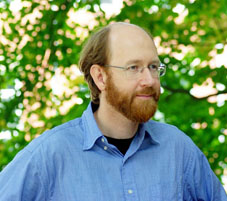 Update, November 11: The BBC also featured this discovery, and the report can be seen on the BBC website. The Associated Press also filed a report, as did the New York Times.
Update, November 11: The BBC also featured this discovery, and the report can be seen on the BBC website. The Associated Press also filed a report, as did the New York Times.
The Google Alert I received in my in box yesterday morning made me say out loud, “Oh!” It was an article in the Washington Post about one of our own professors’ hunt for special treasure.
Adrian Wisnicki, who joined IUP’s faculty this fall, teaches British Literature in the English Department. His discovery and analysis of one of David Livingstone’s journals led to the story, which appeared in the November 1 edition. See the story.
Wisnicki, who is the codirector of the Center for Digital Humanities and Culture at IUP, initially went in search of Livingstone’s field diary for the insight it would provide on Central Africa’s culture in 1871, and he found it with the help of an archivist at the David Livingstone Center in Scotland. Wisnicki worked with Library of Congress spectral imaging experts to decipher the makeshift journal fashioned out of old newspaper and ink made from berries, which Livingstone, who was low on supplies, was forced to use. Wisnicki found discrepancies between Livingstone’s working journal–the tattered find from Scotland–and his ultimate published work.
The conclusion is that Livingstone may have chosen to bend the truth to hide a few details that, in hindsight, would have reflected badly on his pristine image, according to the article. The famous explorer, missionary, and physician published an account of a massacre that eventually led to the abolition of a certain slave market, but his diary tells a different account.
Not even after a hundred forty years can someone hide from a persistent person and spectral imaging. Facts are stubborn things, although Wisnicki is still analyzing the journal’s contents.
Wisnicki and the colleagues who worked on the project have ensured the full text of the journal is available online, hosted at UCLA’s library. See the David Livingstone Spectral Imaging Project.
